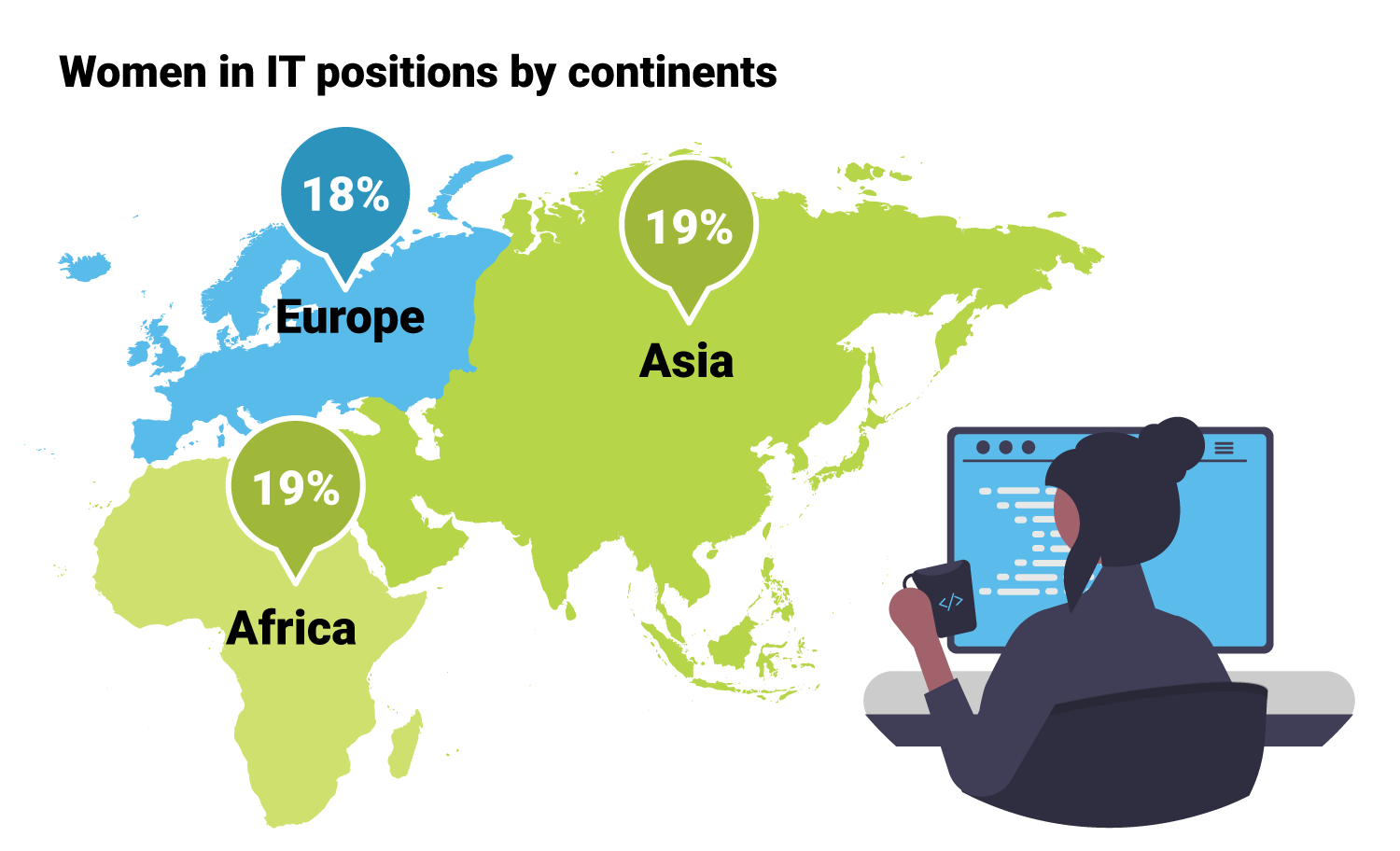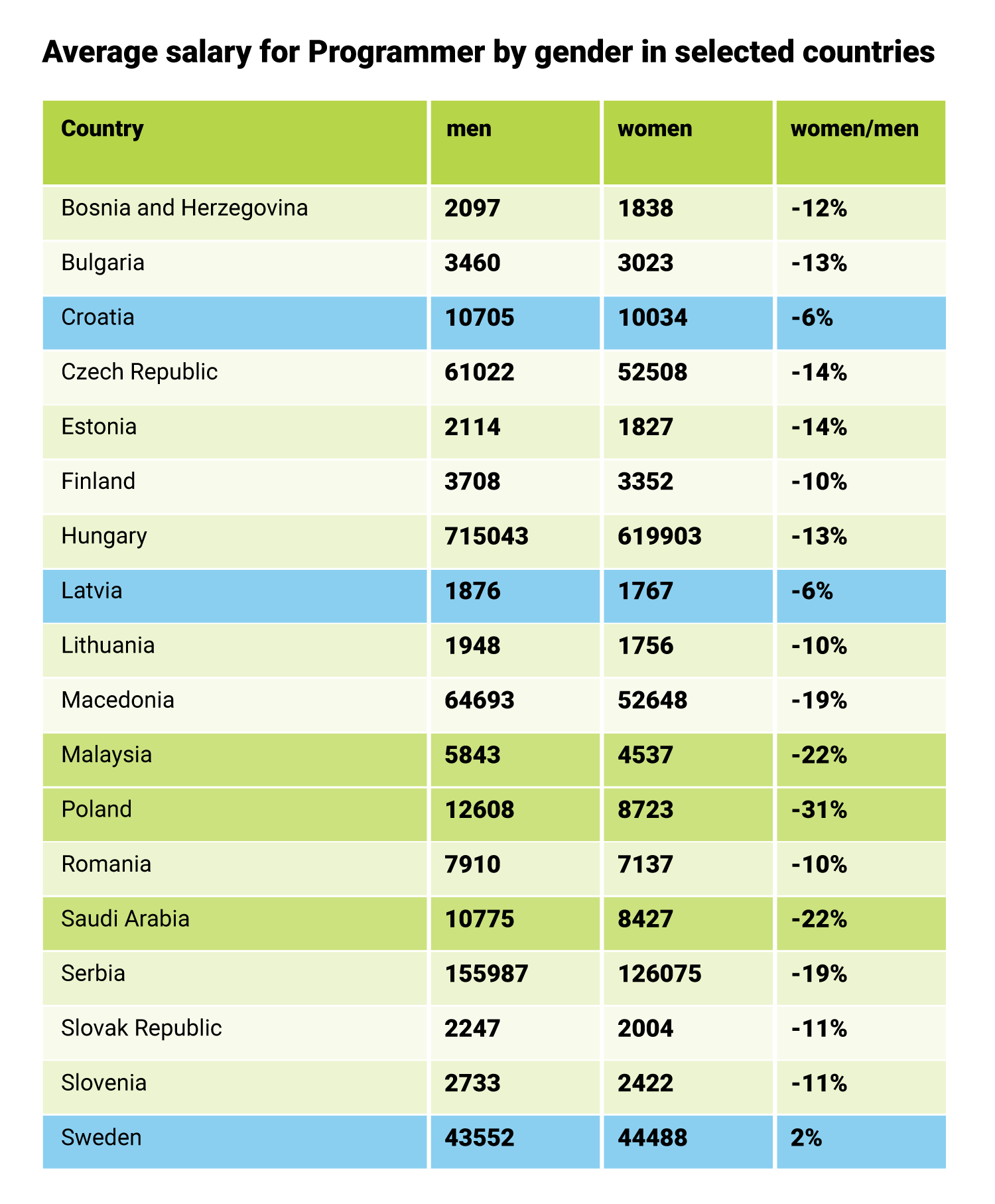Women and Salaries in the IT Sector
22 April 2022

April 22 2022 is ‘International Women/Girls in ICT day’ – a day which aims to encourage more females into studying and working in the information communication technology (ICT) field. The technology sector is dominated by men. Even though women make up nearly half of the workforce in the world, only 25% of technology related jobs are held by women. This is a sad statistic and one that needs to change.
Why are there less women in technology?
A lot of the reasons that less women are working in technology stems back to education - both at secondary and university levels. It is a known fact that girls are less likely than boys to study the STEM subjects of science, technology, engineering and maths. But why? These subjects are perhaps traditionally seen as being more 'male' and girls may avoid them as they are so heavily male dominated, or because they don't enjoy the subjects as much in school, or simply because there are so few female role models in the technology industry.
Women are definitely needed in the industry. The more diverse a tech company is, the better they will perform overall, the more engaged their employees will be and they are more likely to retain their employees. All companies, no matter what the industry, benefit from being as diverse as possible - with all employees bringing different skills, values and attributes to a role.
Paylab looked at the number of men and women in IT positions across three continents - Asia, Europe and Africa - and the differences are staggering. In both Asia and Africa only 19% of all workers in IT positions are women. It is a similar situation in Europe where only 18% of all IT positions are held by women.

Paylab looked specifically at the position of 'Programmer' across 18 selected countries within Asia and Europe to investigate whether there are differences between the salaries of men and women in this job role.
A programmer's job description includes:
- Developing computer applications, mobile phone applications, and websites in various programming languages.
- Analysis of customer requirements, assessment of potential risks and related technical issues.
- Participation in the creation of technical specifications.
- Turning over completed work to a client or tester for testing purposes.
- Determining and correcting functional and security errors in source code.
- Turning over completed software applications to clients, project managers, etc.
- Providing technical support to clients.

In Asia only 19% of programmers are female, and in Europe it is even lower with just 11% of programmers being female.

This table highlights the differences in salary for male and female programmers across the selected countries. It is really encouraging to see that Sweden has the lowest gender pay gap of all the countries, with a difference of only 2% between men and women's programmer salaries. Croatia and Latvia were the second lowest countries with a pay gap of 6%.
All of the other countries involved have between 10% and a massive 31% difference between the salaries of the same programmer role for the different genders. This is a shocking statistic and needs to be changed. Why does a male programmer in Poland earn 31% more than his female counterpart for exactly the same role? Saudi Arabia and Malaysian female programmers are also being discriminated against, earning 22% less than the male programmers.
The salaries for the same role should be exactly the same no matter what the gender is. This of course is potentially another reason to put girls and women off a career in ICT if they can see that they are being paid less than men.
How can things change for the future?
Fundamentally, schools and education settings need to encourage more girls into these subjects from a much younger age. Perhaps by setting up technology specific clubs at their school - like robotics or computer programming or coding. Higher education settings offering technology courses need to better disseminate information to girls about how and why they should consider a career in this sector, perhaps even by incentivising them to study an ICT course. Companies also need to look at their recruitment processes and come up with ways to create a more diverse workforce with more equality.
Other countries also need to learn from the likes of Sweden, Croatia and Latvia and understand how they have encouraged more girls and women into ICT.
Paylab statistics have confirmed that women are asking for lower salaries than men during interviews. Our recommendation for all potential employees is to check the salary before interview and ask for the real salary in line with the current market conditions.
Finally, there could also be a problem with women returning from maternity leave in the ICT sector. Whilst the woman is at home, her male colleague can carry on working and learning new technology and skills as they evolve. This means that the male employee is better prepared for the labour market and can demand a higher salary. Again, companies need to look at this and ensure that women who have career breaks due to having children are offered the same opportunities for training and advancing their careers.
